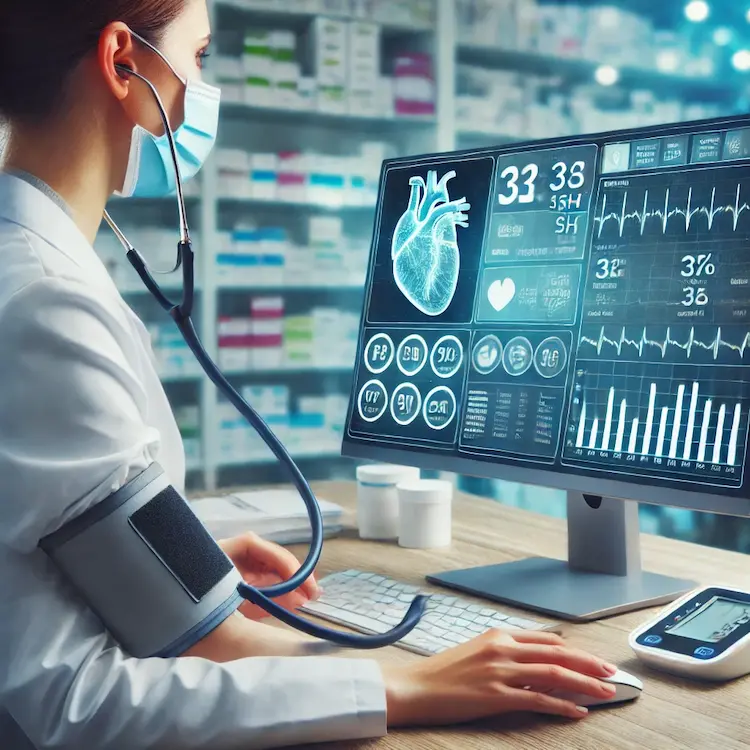Health-Based Patient Monitoring (HBPM) is an innovative approach to managing chronic conditions, particularly hypertension, by allowing patients to monitor their health at home. As healthcare continues to evolve, the role of pharmacists in supporting HBPM has gained significant importance. Pharmacists have unique training in drug management, patient education, and disease management, making them integral to improving patient outcomes through HBPM.
This article breaks down the role of pharmacists in HBPM, offering an in-depth explanation of how they contribute to patient health, the tools they use, and the benefits to both individual patients and society as a whole.
Health-Based Patient Monitoring involves the use of tools like blood pressure monitors, glucose meters, or wearable health devices to track health parameters regularly from the comfort of one’s home. Patients collect data and share it with healthcare providers, allowing for more accurate and timely interventions.
HBPM allows for the early detection of health issues, better management of chronic conditions, and more personalized healthcare. It shifts part of the responsibility of health management from healthcare facilities to the patient, promoting greater patient engagement and autonomy.
Pharmacists play a crucial role in supporting HBPM by providing guidance, education, and ensuring that patients use monitoring tools effectively. They collaborate with other healthcare professionals to interpret data and adjust treatment plans accordingly.
Pharmacists review medications to ensure they are effective and appropriate for managing chronic conditions. They help prevent adverse drug reactions by monitoring patients’ medications, ensuring they are compliant, and recommending adjustments as needed. In the context of HBPM, pharmacists help optimize the medications patients take based on their health data.

One of the most vital functions of pharmacists in HBPM is educating patients about how to properly use health monitoring tools. Proper use of a blood pressure monitor or glucose meter is essential for accurate readings. Pharmacists ensure that patients understand how to take measurements correctly and how to interpret their results.
While pharmacists do not diagnose conditions, they are essential in interpreting health data collected through HBPM tools. They work alongside doctors and other healthcare providers to adjust treatment plans based on the data provided by patients. By integrating data from HBPM tools, pharmacists can help clinicians make informed decisions.
Pharmacists are increasingly involved in chronic disease management. In particular, managing hypertension is a significant part of HBPM, as high blood pressure is one of the most common chronic conditions. Pharmacists can guide patients in understanding their blood pressure readings and recommend adjustments to lifestyle or medication based on their results.
Pharmacists collaborate with doctors, nurses, and other healthcare providers to ensure that patients with chronic conditions are managed properly. Through HBPM, pharmacists can communicate directly with other healthcare providers about any significant changes in a patient’s health metrics, leading to timely interventions.

Pharmacists can help patients maximize the benefits of HBPM. Here are some practical steps for patients to get the most out of their health monitoring:
There are several tools available for HBPM, each with unique features. Here’s a comparison of common tools used for hypertension monitoring:
| Tool Type | Features | Pros | Cons |
|---|---|---|---|
| Manual Blood Pressure Monitor | Requires manual inflation, sphygmomanometer, stethoscope | Affordable, widely available | Less accurate if not used properly |
| Digital Blood Pressure Monitor | Automatically inflates and deflates cuff | Easier to use, accurate, portable | More expensive than manual monitors |
| Wearable Devices | Continuously monitors vital signs | Tracks data in real-time, user-friendly | Expensive, may need regular calibration |
Pharmacists are indispensable in supporting HBPM, from educating patients on proper usage to interpreting health data and managing medications. Through their involvement, they enhance patient care, improve chronic disease management, and help reduce healthcare costs. As the healthcare landscape evolves, the role of pharmacists in HBPM will continue to expand, offering patients better health outcomes and more personalized care.